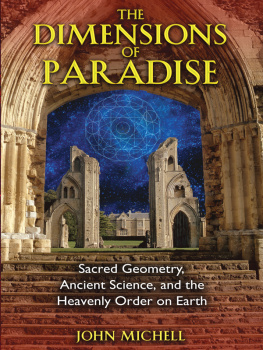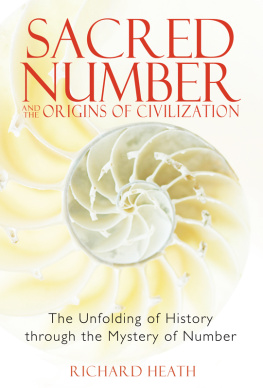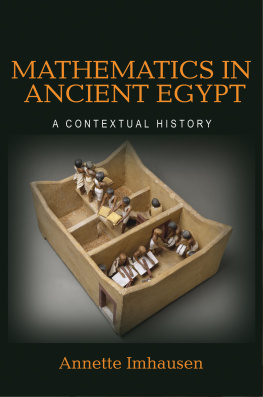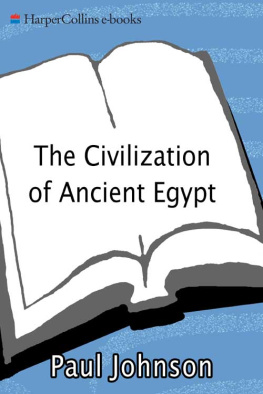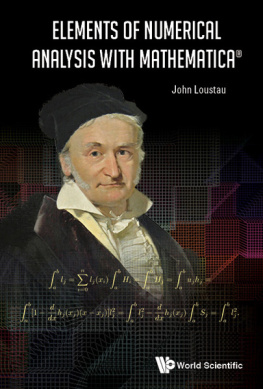THE
DIMENSIONS
OF
PARADISE
Sacred Geometry,
Ancient Science, and the
Heavenly Order on Earth
JOHN MICHELL

Inner Traditions
Rochester, Vermont
INTRODUCTION
IN QUEST OF THE CANON
A ncient science was based, like that of today, on number, but whereas number is now used in the quantitative sense for secular purposes, the ancients regarded numbers as symbols of the universe, finding parallels between the inherent structure of number and all types of form and motion. Theirs was a very different view of the world from that which now obtains. They inhabited a living universe, a creature of divine fabrication, designed in accordance with reason and thus to some extent comprehensible by the human mind.
The special regard paid to mathematical studies in the ancient world arose from the understanding that number is the mean term in the progression from divine reason to its imperfect reflection in humanity. At some very early period, by a process quite beyond explanation, certain groups of numbers were brought together and codified. Thus was created that numerical standard, or canon of proportion, which was at the root of all ancient cultures and was everywhere attributed to some form of miraculous revelation. It was taken to be the nucleus and activating principle of number generally, a summary of all the types of progressions and relationships that occur within the field of number and thus a faithful image of the numerically created universe.
In the known civilizations of antiquity, such as China, Babylon, and Egypt, the canon of number was venerated as the source of all knowledge and a guide to rightful conduct. Its influence extended from art and music to affairs of state. Every branch of science expressed its theories and observations in terms of that same small group of numbers which are investigated in this book. One numerical code has fashioned the whole of ancient mathematics, music, astronomy, chronology, metrology, and every variety of craft. It has left its mark on every relic and tradition of ancient cultures. There is nothing artificial about it, for the conclusion to these researches is that the various orders of natural phenomena do indeed conform to certain similar patterns of number, which also provide the framework of number itself. This allows the eventual reconstitution of that scientific standard which supported the fabric of ancient societies over periods of time that, by modern reckoning, seem remarkably long.
The author is frankly partial to the traditional order of philosophy associated in the West with Plato but also expressed in every different culture. It is called idealistic because it is concerned with causes rather than effects and with ideal forms rather than appearances. It is also called perennial, meaning that it grows naturally in the human mind and blossoms at certain seasons. The reason for its constant, universal recurrence is that it is mathematically based. Thus it provides a most realistic view of the world, balanced and made fully human by its transcendental aspect, the traditional doctrine of the souls immortality.
The number series that is demonstrated throughout this book not only was the source of all traditional arts and sciences but also gave birth to the system of philosophy adopted by Plato. That philosophy occurs of its own accord in the mind of whoever studies these numbers, their relationships, and their applications in different branches of nature. Through such studies the Pythagorean dictum All Is Number comes to life, and thus is opened a new outlook on the world in general. This new outlook, which is not in fact new but traditional, has certain consequences, discussed in the final chapter. It opens possibilities for the future, when the lack of a common, humanistic, scientific standard in affairs has become even more glaring than it is now, and necessity compels the search for some universal guiding principle.
To that future this book is dedicated. Its contents may seem in part dense and obscure. That is mainly due to the authors lack of ability to do justice to this worthiest of all subjects. But it is due also to the modern eclipse of the traditional worldview that gives significance to these studies. The science here unfolded is of no obvious relevance to the modern world, and the type of philosophy that goes with it has been supplanted by other, temporary orthodoxies. To give sense and context to the following studies in the ancient canon of number, the traditional sciences relating to it are briefly described in separate chapters, with reference to the grand alchemical science to which they all contributed and the cosmological outlook that engendered them. This last is the most important, for the purpose and methods of the old sciences are apparent only in the light of traditional cosmology. That light is still hidden below the horizon of modern consciousness, but it can never be extinguished. And when next it arises, demanding the forms of science appropriate to it, the subjects raised in this book will be once again of paramount importance.
This book is the outcome of its authors quest, pursued over many years, for the legendary key to universal knowledge alluded to in esoteric traditions and early texts. Its point of departure was Platos statement in the Laws that the Egyptian priests possessed a canon of lawful proportions and harmonies, by means of which their civilized standards had been preserved uncorrupted for literally thousands of years. The discovery and maintenance of true cultural standards was the main theme of Platos own writings. His scheme for a well-governed city, described in his Laws, was based on a certain numerical formula, often referred to but specified by only one of its components, the number 5,040. From this and his other mathematical allusions, the inference is that Plato himself had studied the laws of harmony he attributed to the Egyptians. In pure mathematical form, those laws were made the cornerstone of his proposed reforms in education and politics. The following chapters on Platonic number show how the laws of harmony were expressed numerically, as the dimensions of a city, a scale of music, or intervals in astronomy. In all his cosmological demonstrations, Plato used the same set of numbers and similar geometrical diagrams, applying them to such apparently different things as music and the order of the planets, and thus illustrating his belief that number is the natural bond that holds together the entire universe.
One of the conclusions from this study is that Platos symbolic arithmetic was not a contemporary discovery but a heritage from the distant past. The ground plan of his imaginary City (, the ancient units are analyzed and given their exact values, from which it appears that their lengths represent subdivisions of certain basic standards. The standards referred to are not in the first instance physical: they are indeed reflected in the actual dimensions of the earth and the solar system, but in essence they are purely numerical. And the numbers that express ancient units of length are the same as those that denote the scales of traditional music. The forms of music and measure known to Plato were defined and codified thousands of years before his time. Their common source was the canon of number, which Plato either learned wholly from certain teachers or partly reconstructed. His own concern as a would-be reformer and cultural revivalist was to renew the influence of the canon and make it once more effective as an instrument for universal harmony and stability.
It was probably through the Mystery schools, the select institutions of scholarship and mystical inquiry in classical and early Christian times, that the esoteric tradition which Plato drew on was passed down to the founders of Christianity. They were the cause of its last flourishing, soon to be blighted. St. Johns New Jerusalem, a visionary form of Platos ideal City and numerically identical to it, was a token of the new heaven and new earth that the prophet foresaw as the issue of renaissance through Christianity and the restoration of the true cosmic standard. Early Christian traditions are particularly useful through indicating the relative meanings and importance attributed to those numbers that occur in earlier sacred contexts. Thus, for instance, we learn of the supreme significance to Christian mystics of the number 3,168, which was also the paramount number in the ancient canon. Those Christian sects who practiced the numerical theology claimed that, through assimilating the pagan science, Christianity had become the legitimate heir to the ancient religious tradition.
Next page
